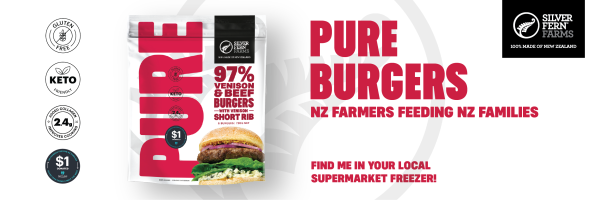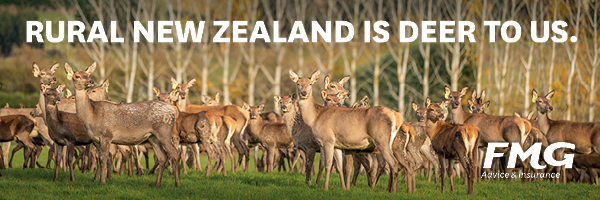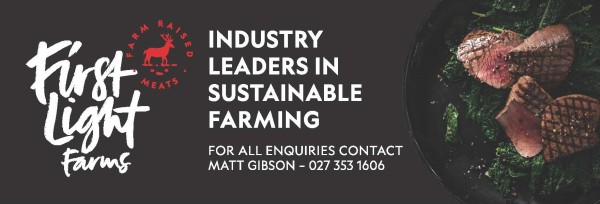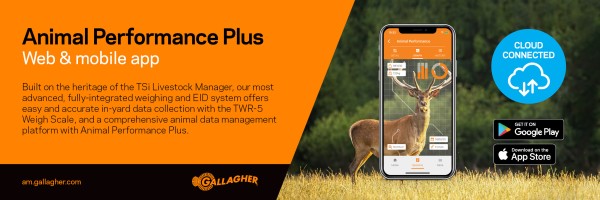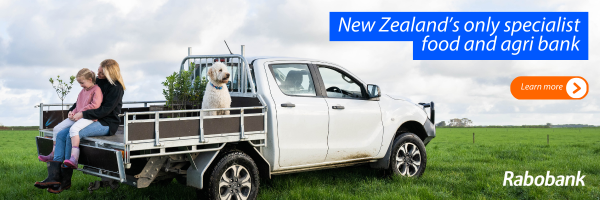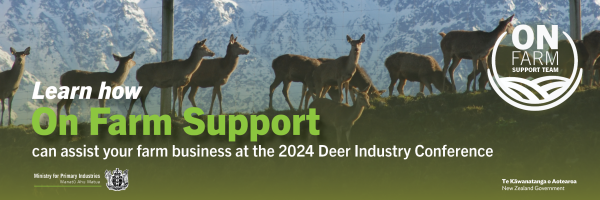Apr 18, 2024
Click a heading below or scroll down to read
Main
- Venison demand may outstrip supply this year
- Deer farmers reminded: be a mate, update NAIT
- China velvet access: Constructive meetings held in China and NZ
In Brief
- Korean healthy functional food market developing for New Zealand velvet
- Putting New Zealand venison’s toes into the Korean market
- Deer industry welcomes Government’s next steps for agricultural policy reform
- The deer industry needs to continue its sustainability journey
- Drought broken?
- Quarantine drenching deer – not an easy fix
- Drench resistance should be front of mind for deer farmers
- Considerable change for the deer industry in 2022-2023
- DINZ staff update: Welcome to Louise Balkham
- NZDFA Elections: vote required for NZDFA SAP
- Countdown begins: under one month to go to Conference 2024
Korean healthy functional food market developing for velvet
The healthy functional food market continues to develop for New Zealand velvet in Korea. Helping it along were recent “positive meetings” held by the DINZ executive team visiting Korea.
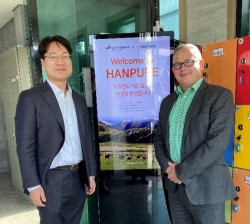
Hanpure chief executive Alex Chung (left) met with Griffiths (right), Bell and Connell at the Hanpure offices.
DINZ executive chair Mandy Bell, markets manager Rhys Griffiths and assistant markets manager Virgina Connell met with, “our closest partners at the Korean Ginseng Corporation, Kwangdong, Yuhan Care and others,” Griffiths reports.
This was the first time Bell and Connell had visited Korea, so it was an opportunity for Griffiths to introduce new faces. They were also able to discuss face-to-face any possible issues arising from China’s changes to its rules for imported frozen velvet used in traditional Chinese medicine. A good proportion of the New Zealand velvet used in Korean TCM is sourced from Chinese processors.
Connell found the face-to-face meetings with key contacts “very beneficial”, along with visiting the factories which gave her an appreciation of how New Zealand velvet fits into their businesses and the scale involved.
Putting New Zealand venison’s toes into the Korean market
Positive feedback for New Zealand venison from South Korean chefs at a recent event there points the way forward in a new market segment.

Chef Graham Brown demonstrating New Zealand’s versatility to invited guests in Seoul.
The visit of DINZ executive chair Mandy Bell, markets manager Rhys Griffiths and executive chef Graham Brown to Korea presented a perfect opportunity to gain feedback from key Korean opinion leaders on New Zealand venison’s suitability for the Korean market.
Twenty-nine guests attended a Venison Tasting Experience hosted by New Zealand ambassador Her Excellency Dawn Bennet at her Seoul residence on 19 March. Guests included high-end chefs, New Zealand Embassy, MPI and MFAT staff, alongside DINZ’s in-market agency Latitude, a representative from Silver Fern Farms and a distributor for Alliance Group.
Five dishes were prepared by DINZ executive chef Graham Brown and residence chef Gracey Mendonca. A survey afterwards revealed the chefs found venison’s texture the most impressive aspect of the meat, followed by flavour. Its health benefits were also relevant for their customers, they felt.
“It appeared to be a great success,” says Griffiths. The event started the conversation with influential chefs, “and also stimulated interest in venison with various contacts, who will be influential for New Zealand venison’s future success.”
No obvious barriers – in terms of perception, taste, texture and odour – were detected for New Zealand venison, but as in China, even though New Zealand velvet is well known there, “education will be needed about the meat for Korean customers in the new market segment.”
Next steps could see DINZ working on a market validation project, comprising market research, establishing appropriate cuts for the market, engaging venison brand ambassadors and working with restaurants using venison.
Deer industry welcomes Government’s next steps for agricultural policy reform
The deer industry welcomes the Coalition Government’s plan to move ahead rapidly to the next stage of reform for the agricultural sector.

Roaring approval from the deer industry. Photo Sophie Atkinson.
A new Action Plan, building on the now completed 100-day plan, was launched by Government on 2 April, much of it, “focused on rebuilding the economy,” said Prime Minister Christopher Luxton at its launch.
Keeping reform momentum going to the end of June, the plan has four action points of relevance for this sector:
1) to introduce legislation to amend the Resource Management Act (RMA) clarifying application of the National Policy Statement on Freshwater Management (NPS-FM) around individual consents for freshwater; 2) to introduce legislation suspending the requirement for councils to identify and adopt new Significant Natural Areas; 3) to finalise policy to keep agriculture out of the Emissions Trading Scheme; and 4) to start an independent review of the methane science and targets.
The promised NPS-FM reform has been delayed a little as legislation needs to be introduced to effect change and “because each council has to consider where they are in their planning timeframes and how this relates to the delay,” notes DINZ executive chair Mandy Bell.
DINZ is working with Beef + Lamb NZ and Federated Farmers and advocating for the deer industry in its contact with individual councils, to make sure the deer industry’s point of view is considered in any changes.
“We support all of these items,” says DINZ environmental stewardship manager Luka Jansen. “Knowing they are a priority is a huge relief for the agricultural sector.”
The deer industry needs to continue its sustainability journey
Recent developments have led DINZ executive chair Mandy Bell to notice, “quite a shift happening” around the world, outside of government regulations, that mean the industry’s sustainability journey needs to stay on course.
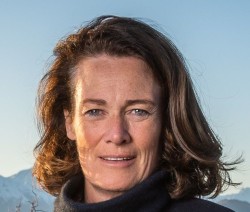
Bell: The deer industry needs to “carry on our journey, with good scientific knowledge supporting our work.”
“We will need not only to be strong in advocacy but also be aware that the world is continuing to move on in looking for healthy products and validation of care of the environment,” she says.
The newly ratified NZ-EU free trade agreement should smooth the flow of trade and boost co-operation between the two markets, but FTAs “are only one part of the story,” she says.
Suppliers, including New Zealand venison, will be affected by demands from the EU’s new Green Deal. The aim is to make the trade bloc the world’s first climate-neutral region by 2050, reducing net greenhouse gas emissions by at least 55 percent by 2030 compared with 1990 levels.
The same theme was coming through in China, where ’Good for me’ is the consumer mindset, but companies recognise sustainability adds a premium, she says. They are benchmarking themselves against international sustainability standards, including the “gold standard” EU regulations, according to a recent report from MFAT ‘The Green Dragon: Sustainability in the China Market.'
Other global corporate climate action initiatives have also developed, outside government. Among these is the global Science-Based Target Initiative (SBTi), which independently evaluates targets set by companies. Among the 7,500 organisations already signed up, thirty-five are from New Zealand and include Silver Fern Farms, Fonterra and Tōitu Envirocare.
For Bell, the deer industry, “needs to carry on our journey, with good scientific knowledge supporting our work with the companies to which our New Zealand venison and velvet is going.”
Drought broken?
As this issue of DINZ eNews went to press, the drought appeared to have had broken in some affected regions, especially the West Coast which has been deluged, but not others. For many, it will now be a green drought, with little or no autumn pasture to turbo-charge weaners. Winter forage crops may be well short of their potential.
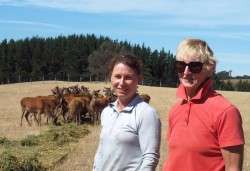
Wairau Valley deer farmers Giselle a nd Marilyn Shewan, prepared well for the drought.
Options for sowing winter crops are now pretty much limited to forage oats, rye, corn or annual or Italian ryegrass. While they may not provide significant feed for winter, they can provide crucial feed in early spring. DINZ suggests farmers seek advice from their seed merchant on what might best suit their needs.
It is crucial during times when there is a severe feed shortage to stay in control of the situation and to keep making decisions. To do this, individuals need to stay positive during a highly stressful time.
Social engagement or sporting activity off the farm have been shown to be very effective ways to improve mental health. Sharing concerns with friends and professional advisors may also help. Your family and those you work with will thank you for it.
The Checking-in rural recovery programme is running a series of events to help and has various useful tools. The Rural Support Trust is also available on 0800 787 254 to provide local support.
DINZ resources include the Drought Feeding and Management Deer Fact, which outline principles that will apply to any severe feed shortage at any time of the year.
Another useful tool will be the Deer Feeding App which calculates the feed requirements of different classes of deer at different times of the year. It also enables cost comparisons between different feeds on ME (metabolisable energy) and protein content.
Kia kaha to everyone affected by the current dry. For those struggling to find feed or that need off-farm deer grazing the NZDFA may be able to help. Contact lindsay.fung@deernz.org, phone 027 668 0141 or your local NZDFA branch chair.
Quarantine drenching deer – not an easy fix
A current Wormwise focus on the importance of quarantine drenching has deer farmers asking whether is a protocol that applies to deer.
Drenching weaners. Young deer infected with internal parasites have significantly decreased growth rates, compared with deer that do not have parasites. Photo: R Hilson.
Quarantine drenching has had little attention in the deer industry, says Wormwise programme manager and vet Ginny Dodunski, who suggests surveying the deer farmers who are out there “using minimal anthelmintics, but getting really good performance,” to find out how they do it.
Her advice to deer farmers buying in young deer “would be to assess the risk of resistance on the farm the animals are coming from”.
If a quarantine drench is required, the product used must have the highest chance of removing resistant worms, with a long enough ‘stand-down’ period to allow eggs already laid by these worms to pass out of the gut onto an area where they can’t complete their life cycle.
While the same principles should apply – that new arrivals are treated with a combination of as many unrelated drench actives as possible and put in quarantine area for 24-48 hours – “We don’t have all the answers for deer,” acknowledges Dodunski.
Using a novel drench, Zolvix or Startect, is the ‘Gold Standard’ quarantine approach for lambs to remove drench resistant worms. But neither are effective in deer.
Current best practice is to use the triple active Cervidae Oral, or a combination of other products that deliver the same dose of the active components, says Dodunski.
While a stand-down period may not be practical on all farms, at a minimum, new arrivals should be grazed on older, well contaminated pasture, not new grass paddocks. That way, any resistant eggs that do pass out will be diluted by the mixed worm populations already present.
“Really good nutrition gets around a whole lot of problems with worms,” she notes.
Drench resistance should always be front of mind for deer farmers
“Drench resistance should always be something forefront of mind for deer farmers,” says deer farmer and veterinarian Camille Flack.'
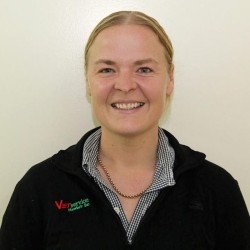
Understanding what’s in their system that’s increasing drench resistance is key, says Flack.
Participants discussed parasite management at the NZDFA’s Hawke’s Bay branch’s weaning-focused Deer To Succeed field day in mid-February (see Deer Industry News, March 2024), which Flack co-facilitated.
Parasite levels on deer farms vary widely and are very specific to people’s management systems, she has found.
They are often related to their area of deer fencing and the amount and age of deer stock versus other stock classes which relates to their reliance on chemical inputs, and “thus their propensity to develop resistance,” she explains.
”People understanding what in their system leads them to increase the development of drench resistance is key. Once they can identify their risk areas then they can assess what they can do to offset those risks if they can’t, or don’t, want to change them.”
DINZ and NZDFA ran a series of parasite management workshops throughout the country in 2020. All of the information can be found on the Deer Hub here, including the handy ‘Internal Parasites Deer Fact’ >>
Considerable change for the deer industry in 2022-2023
A year of considerable change for the deer industry has been documented in the latest DINZ annual report.
 A new ‘Thriving with Passion’ Deer Industry Strategy 2022-2027 is now guiding the restructured DINZ executive team in new offices, note DINZ chair Mandy Bell and the now former chief executive Innes Moffat in the foreword of the report covering the period to end September 2023.
A new ‘Thriving with Passion’ Deer Industry Strategy 2022-2027 is now guiding the restructured DINZ executive team in new offices, note DINZ chair Mandy Bell and the now former chief executive Innes Moffat in the foreword of the report covering the period to end September 2023.
“Despite the pressures that have been faced, product prices have been holding well, providing a sound platform for the industry’s future and a much-needed boost in confidence,” they report.
“This didn’t come about by accident. It resulted from a clear understanding of the challenges faced and a willingness to act decisively to seize new opportunities, while also managing risk.”
External pressures are “not going to let up any time soon”, they recognise.
The DINZ board was challenged to understand, adapt and identify the opportunities that emerge in such a dynamic environment. This led to the Deer Industry Strategy’s five workstreams for the DINZ executive: 1) market access and development; 2) advocacy and government relations; 3) industry practice and capability; 4) research and insights; and 5) New Zealand Deer Farmers Association (NZDFA) support and partnering.
Good outcomes will require, “stronger prices and returns, pride, increased confidence and a sense of security that returns won’t be eroded. It also requires stronger connection with consumers who, like us, value safe, healthy, ethically grown and high-quality products,” says Bell.
Alongside the new DINZ chief executive, whose appointment is expected to be announced soon, along with the new communications manager, Bell is “looking forward to helping lead the industry into a more confident and prosperous future.”
Download the DINZ 2022-2023 Annual Report here >>
DINZ staff update: Welcome to Louise Balkham

Louise Balkham.
Welcome to Louise Balkham, who is joining the DINZ Office temporarily as NZDFA coordinator during Cenwynn Philip’s parental leave.
Originally from the UK, Balkham has been a Wellingtonian for the past nine years and seemingly enjoying being one. Previously, she worked for Apiculture NZ supporting approximately 400 members. Before that, Louise worked for Jones Lang Lasalle where she managed the facilities for Thomson Reuters. She has been active in the New Zealand and UK scouting movement, but now has a young family which takes up most of her spare time these days, though she is also keen to get out and about meeting deer farmers.
NZDFA elections: Vote required for NZDFA Selections and Appointment Panel
Voting forms have been sent out by ElectioNZ via email or post, following the receipt of three nominations for the two available positions available on the NZDFA’s Selection and Appointment Panel (SAP).

Re-elected unopposed to the NZDFA’s executive committee is Central Hawke’s Bay deer farmer Karen Middelberg, who is also the current chair of the NZDFA SAP.
Received nominations are from William Oliver (Taihape-Ruapehu NZDFA branch), Graham Peck and Dave Lawrence (both South Canterbury-North Otago NZDFA branch). See their full candidate statements here >>
The closing date for votes is 12 pm Tuesday 30 April. Those eligible to vote – full, life or elected NZDFA members and those who have paid venison or velvet levies to DINZ – have been sent an email with a link.
In other NZDFA news, Karen Middelberg has been elected unopposed for reappointment to the NZDFA executive committee. There is still a vacant position on the committee that will be appointed by the Executive Committee.
With no nominations received by the deadline for the producer-appointed board member for DINZ, this was extended to 12 April 2024. Two nominations have been received: Mandy Bell, who is retiring by rotation and seeking reappointment, and John Tacon.
If you have any questions contact the DINZ producer manager, Lindsay Fung at lindsay.fung@deernz.co.nz, or 027 668 0141.
Countdown begins: under one month to Conference 2024
Registrations have been rolling in for this year’s Deer Industry Conference, which will draw the industry together in Napier’s War Memorial Centre on 8 and 9 May. Around 150 are expected to attend the event to learn heaps and network with the industry.
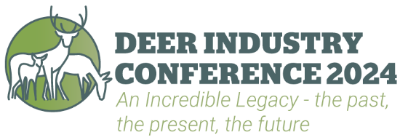
Up-to-date information about the programme, award nominations, registration and accommodation can be found here >>
What’s new?
- Workshop topics have been announced for the four workshops on the afternoon of Wednesday 8 May. Participants can choose to attend three out of those on offer: new forages and feeding strategies; farming for venison – how does this fit with other livestock farming systems; genetics for profit – 2024 Breeding Values and indices: and updates on the latest applied deer science.
- Jen Corkan, Rabobank’s senior animal protein analyst, has been named as the rural lender’s speaker to follow the workshops, with the afternoon closed by keynote speaker deer industry legend Murray Matuschka.
- Hawke’s Bay personality David Todd has been chosen to MC the gala dinner, sponsored by Silver Fern Farms.
- Cyclone recovery field day venue: Tuapae Farm in Kereru, which was badly damaged in last year’s Cyclone Gabrielle will be ready to welcome conference visitors on the morning of Thursday 9 May. Organised by the NZDFA Hawke’s Bay’s branch team, branch chair Evan Potter is promising “plenty of venison on hand for lunch”. The day will finish around 2pm.
Any queries, contact rebecca.norling@deernz.org, phone 04 473 4500.
Many thanks to our conference sponsors:
SHORTS
- Read: ‘Deer hunting boom possible in coming years in Hawke’s Bay after farmed and wild deer intermingle’, Hawke’s Bay Today/NZ Herald, 14 April 2024
- Read: ‘Social media: Sorting fact from fiction’, Jacqueline Rowarth, NZ Herald, 27 March 2024
- Read: ‘International Women’s Day: Mandy Bell’, Ashburton Guardian, 26 March 2024
- Listen: Hunter McGregor talks to Jamie McKay on The Country, 19 March 2024
- Listen: HB deer farmer Harry Gaddum talks to Rowena Duncum about his experiences post-Cyclones Hale and Gabrielle on ‘Farmstrong’s Getting Through’, The Country, 13 March 2024
- Listen: Southland deer farmer is ‘Keeping positive in a demanding season’, The Muster on Hokonui, 2024
EVENTS
Click on the bold links below to get more information about any of the events.
- ‘Checking-in’ rural recovery programme: tools and connection for a tough season – Various events being held around the North Island from February to May 2024. Visit checking-in.co.nz for more information.
- Ballance Farm Environment Awards Open Day
11:00am - 4:30pm, Thursday 2 May 2024, High Peak Station, 546 High Peak Road, Windwhistle, Canterbury. RSVP for catering purposes to Milly Croft canterbury@bfea.org.nz, or call 027 552 1644 by 29 April - REGISTER NOW!! Deer Industry Conference 2024 – Wednesday 8th May (conference) and Thursday 9th May (field day), Napier War Memorial Centre, 48 Marine Parade, Bluff Hill, Napier. Contact: rebecca.norling@deernz.org, phone 04 473 4500.
- 2024 National Velvet Competition and Awards - 5.00-11.00pm Saturday 14 December 2024, Ascot Hotel, Invercargill. Cost: TBA. Contact: Jane Campbell, southlanddeerbranch@gmail.com


